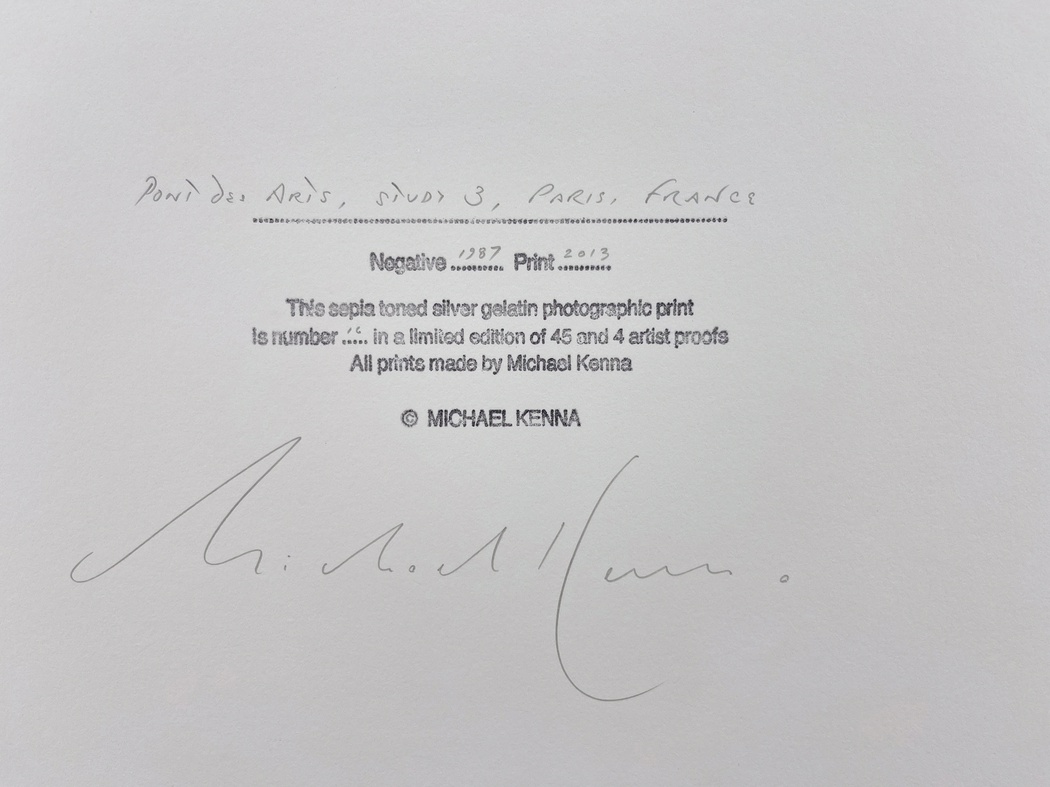
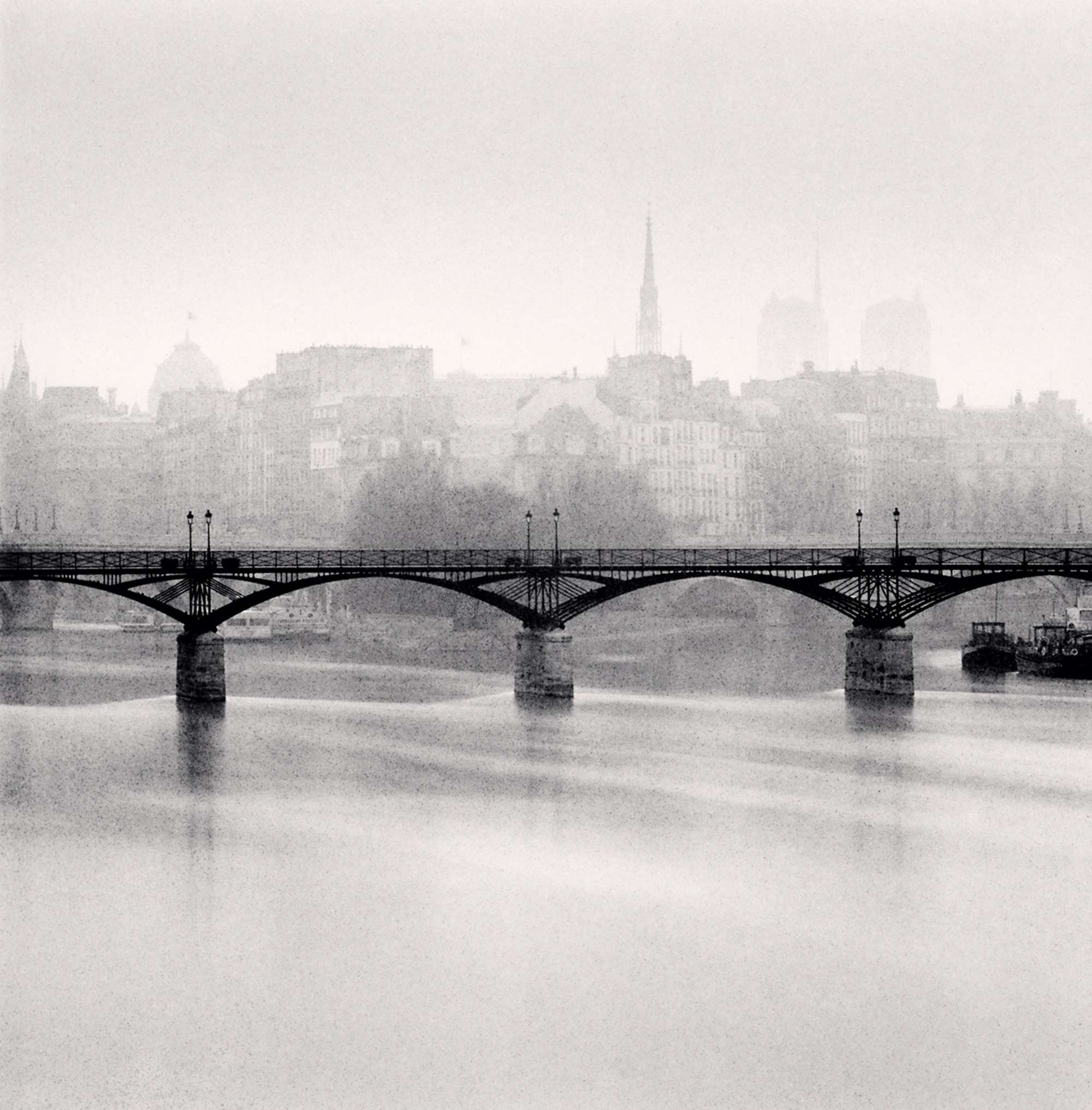
Pont des Arts, Study 3, Paris, France 1987 © Michael Kenna
In the final of five chapters serialising Michael Kenna’s Darkroom Diaries, Michael explains how his prints are mounted, matted, signed, numbered, dated and framed.
“In most definitions of print making, a print is defined as an exactly reproducible image where print #1 is identical to print #100, except for any wear and tear on the plate. It is perhaps possible to do this with pigment printing. However, it is certainly not possible with silver gelatin printing where there are too many variables at play: changes in paper batch and quality, different enlarger light sources, variations in chemical temperatures and strengths over time, subtle differences in burning and dodging, and the quality and quantity of hand retouching. However, probably the biggest variable is the artist’s view of his own work. The hand, eye and mind have a great say in the making of a photographic print. Each silver print made is unique, as there will always be some differences from print to print. I will also emphasise again, that there is no one right way, or even a best way to print any negative. A print is not and should not be the work of a mechanical automaton. Ansel Adams used an analogy of music, suggesting that the negative is the score and the print is the performance. A musical score constantly conducted and performed in the same way can become somewhat tedious. I do not make exact duplicate prints of those I have made previously. Rather, each print serves as a stepping off point for the next. Variation, innovation, creativity gives life and spice to music and printmaking. I keep one or two master prints from each printing session as starting points for if/when I make reprints. These are the Artist Proofs.
As with the whole printing process so far, there are also innumerable subjective possibilities, with both technical and aesthetic considerations, of how a finished print is presented. I will restrict my observations to the personal choices that I have made along the way. For several reasons, I limit the amount and size of prints I make from any one negative. My standard edition since 1980 has been 45 prints and 4 Artist Proofs. Of course, I might not actually make that many prints as it ultimately depends on how many prints sell, but it is the maximum number of prints I would make from any one negative. In 2017, mainly due to time constraints, I reduced the edition to 25 and 3 Artist Proofs for all new work. The print size for both the editions of 45 and 25 is about 7 3/4 inches square for 120 negatives or 6x9 inches for 35mm negatives. Prints are subsequently mounted and matted on 16x20 inch vertical white museum board (4-ply back, 2-ply front). I prefer the fine line of the 2-ply window to the thicker and more often used 4-ply. Prints are signed, dated and numbered below the print. They are also stamped, titled, numbered, negative dated, print dated, and signed on the back of the mounting board. I have used this presentation for some 50 years which has enabled me to build up a large body of work, almost like a family. In current exhibitions of my work, I have the luxury of comfortably exhibiting prints made at the beginning of my career alongside more contemporary prints - which I rather like.
Reflecting on 50 years of silver gelatin printing, a somewhat arduous, slow and painstaking process, I believe the final prints have made the journey all very well worthwhile. Images, embedded in the gelatin, have been transformed in an almost alchemical process into three-dimensional precious jewel-like prints. Of course, machine made pigment prints are of excellent quality, but, at least for me, silver prints remain the gold standard in photography. It is also comforting to know that these prints are made to archival standards which means they should well outlast myself and collectors. I keep records of every print I have signed and editioned, and have prints which I made 50 years ago that are as good today as when I first made them.” Michael Kenna
Provenance of Pont Des Arts, Study 3, Paris, France 1987 by Michael Kenna. All images below marked © Luke Whitaker, Bosham Gallery 2019
At Bosham Gallery, Michael Kenna’s mounted prints are framed in a flat-fronted 15mm wide hand painted black wooden frame moulding which is 25 mm deep and includes museum art glass. This glass has three benefits, it is neutral in colour and so faithful to the tones of Michael’s original artwork, it is anti-reflective thus allowing the viewer to enjoy the work once hung from all angles within a room, and it cuts out 99% of the UV radiation at the critical range, thus ensuring the print will not fade.
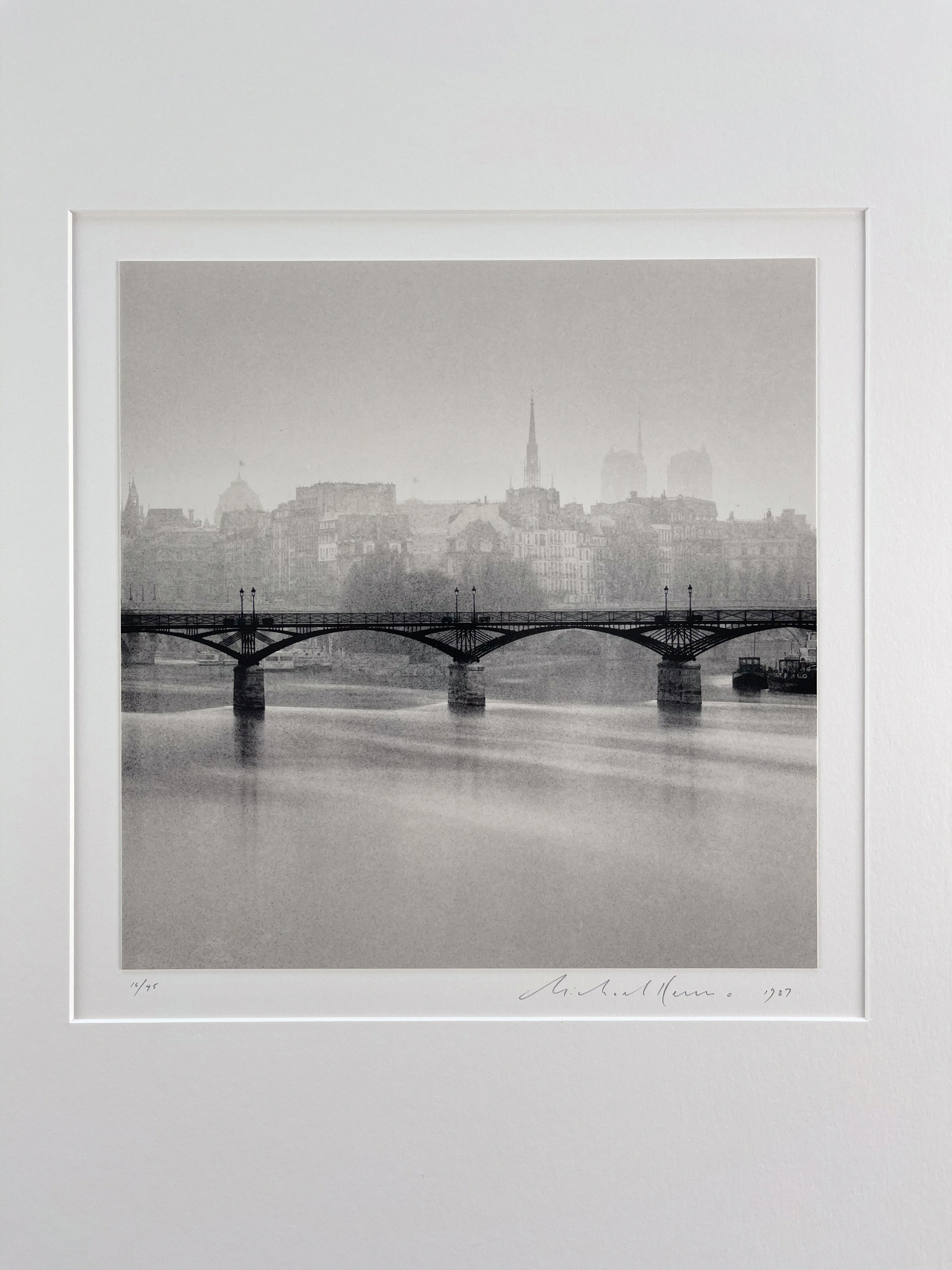
Michael Kenna signs and editions each mountboard below the print and includes the year the photograph was made after his signature.
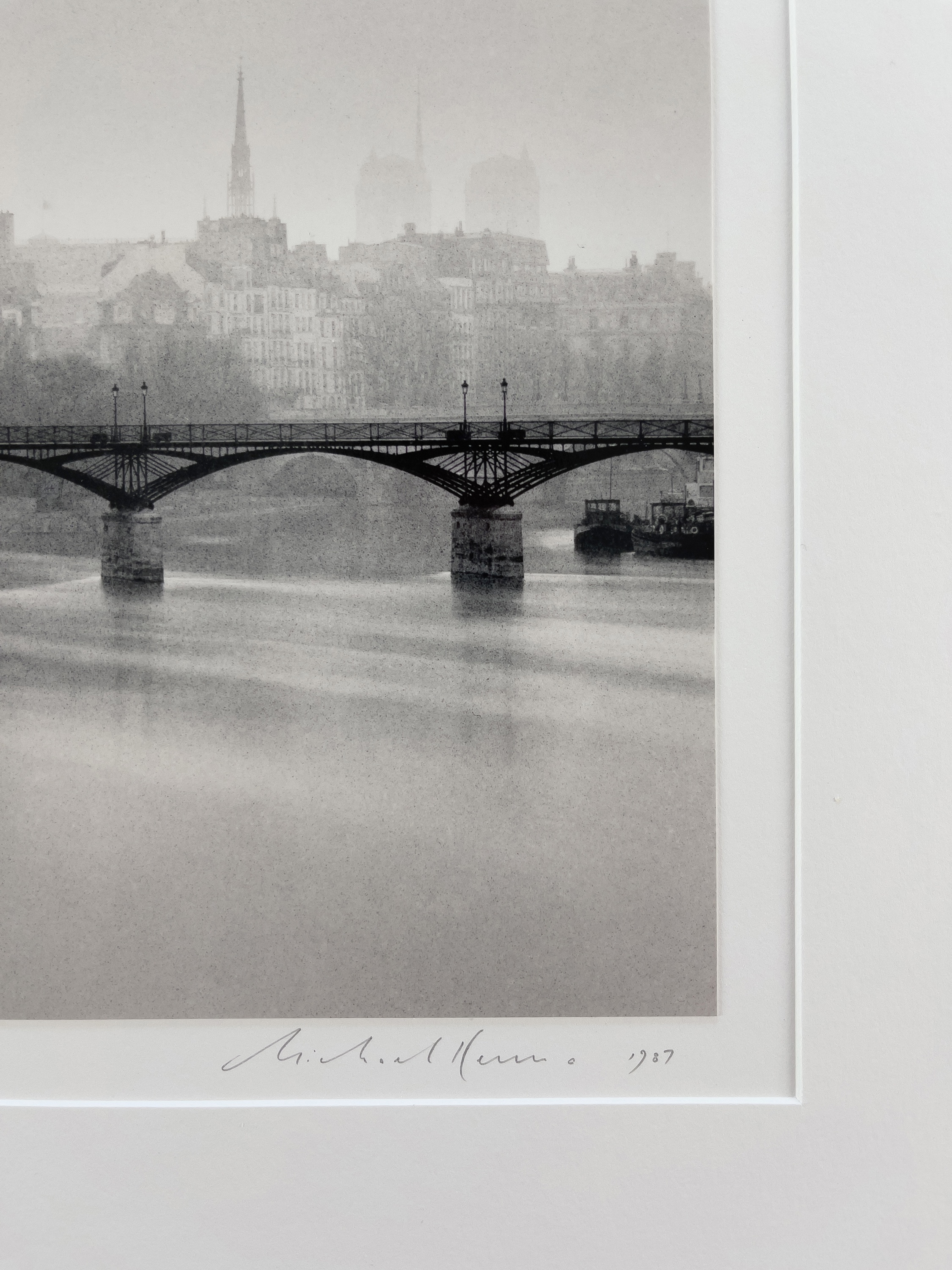
On the reverse of each 16x20 inch mountboard Kenna includes the photograph’s title, the year the photograph was made, the year the print was made, the edition number, the edition size and artist signature.

Silver gelatin prints are matted and mounted on archival 16x20 inch mountboard and framed in a 15mm wide hand-painted black wooden frame moulding behind museum glass.
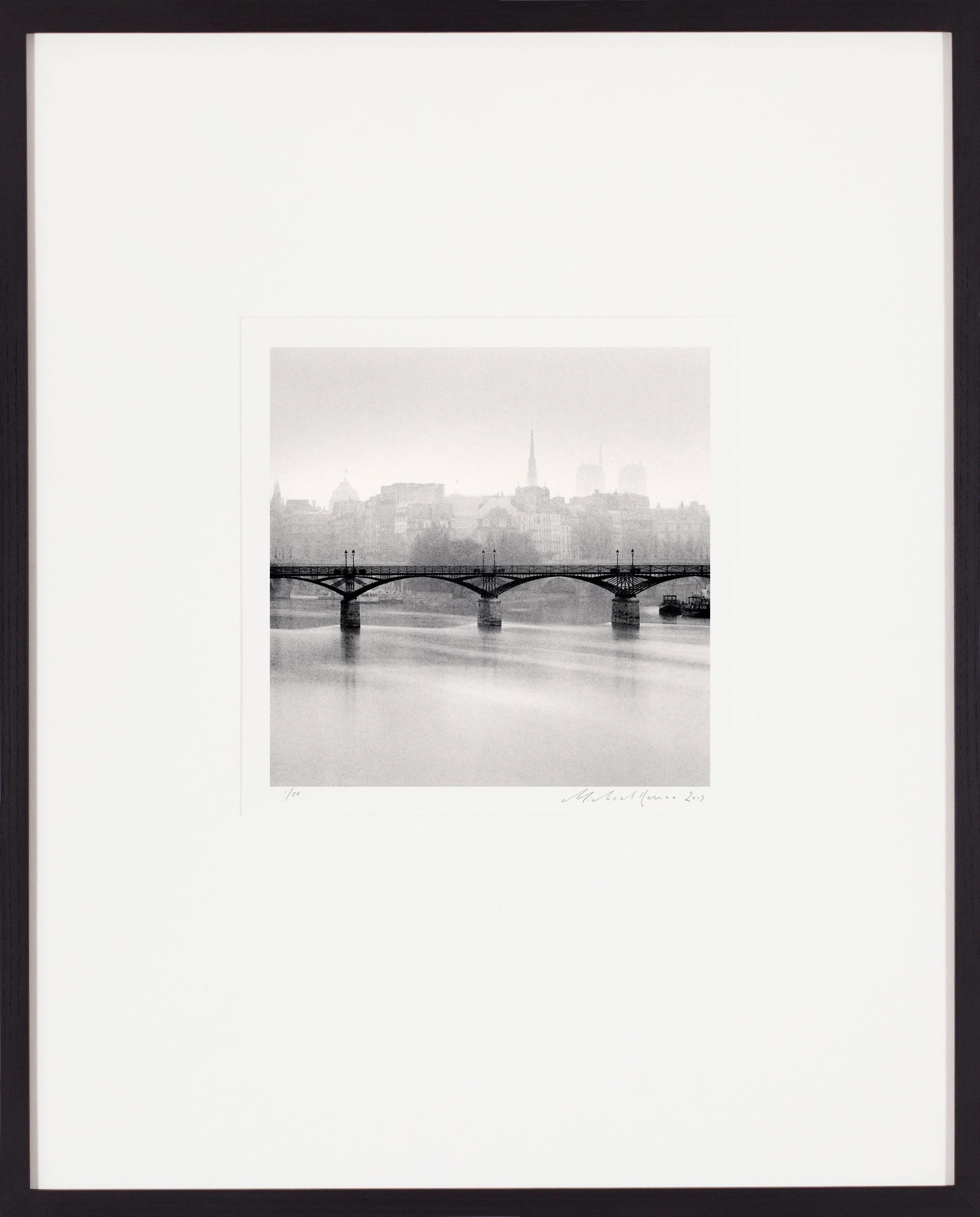
Pont Des Arts, Study 3, Paris, France 1987
Limited Edition of 45 Prints
7.75 x 7.75” Silver Gelatin Print
16 x 20” Mount, Matte & Frame
© Michael Kenna
Text & Photographs © Bosham Gallery & Michael Kenna. All Rights Reserved
